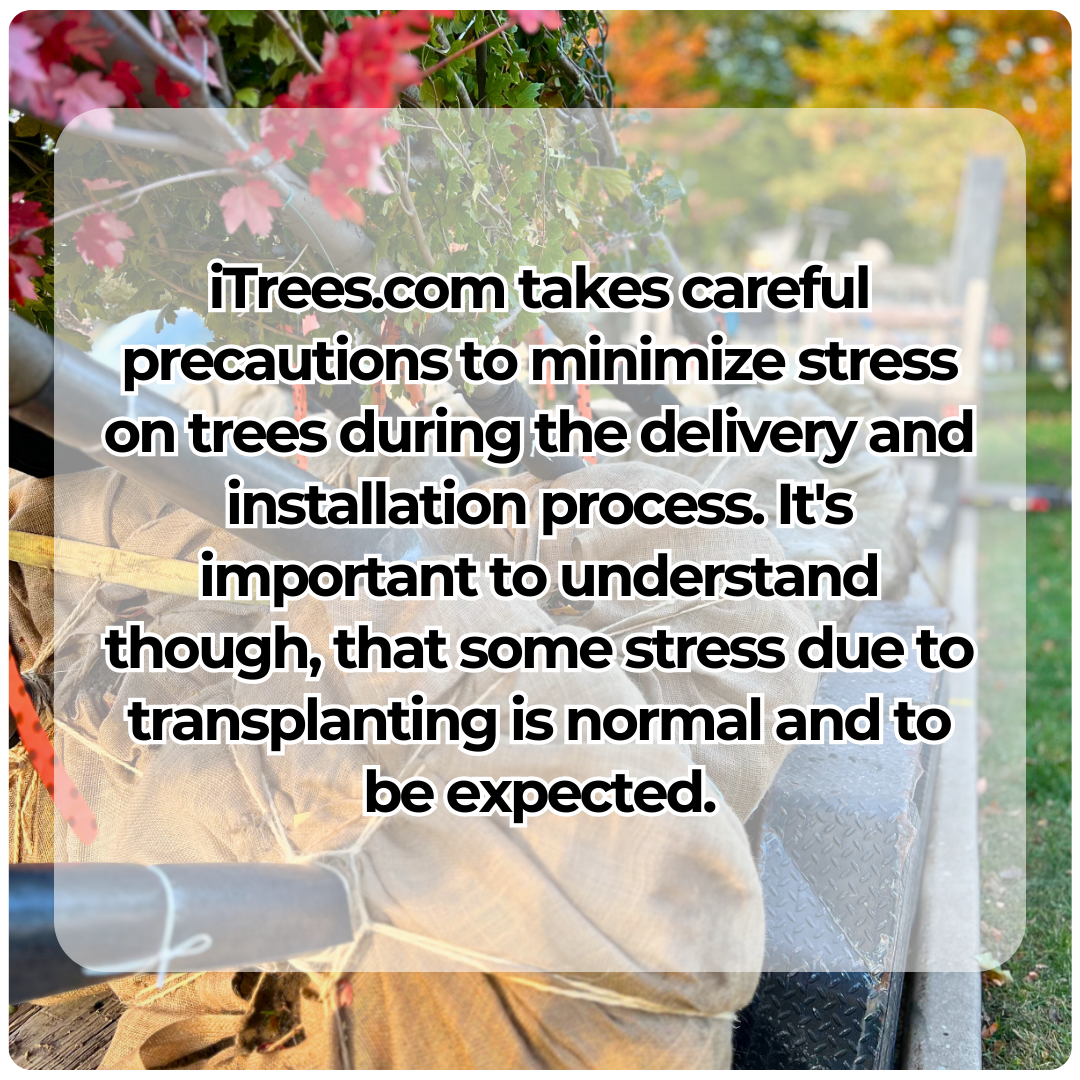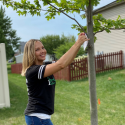
Your newly planted tree is an investment— so you care for it like the asset that it is. You water it, nurture it, and then one day you start to see some leaves yellowing and browning, dropping even. As you cringe you ask yourself, "Is my tree dying!?"
We understand this can be a scary thought, but we're here to reassure you that it's probably not dying but is instead suffering from what is commonly called transplant shock or transplant stress. iTrees.com takes careful precautions to minimize stress on trees during the delivery and installation process. It's important to understand though, that some stress due to transplanting is normal and to be expected.
What does transplant stress looks like?
Yellowing and browning of leaves after being planted is common and it will happen after a tree is planted. It's a telltale sign of stress from being transplanted. There is a lot of stress that's involved with removing a tree from the ground where it's currently growing and then planting it into the ground again. The tree will need to re-establish its root system and in the meantime, you will sometimes see the stress on the outside of the tree, since the tree is conserving its energy.
"Research has shown that a tree can lose 80 to 95% of its root system as a result of transplanting. This causes a great deal of stress. After transplanting, the tree may form fewer and smaller leaves and grow very little. How long the stress period lasts depends on the size of the tree, its site, and the care it is given. A small tree (2-3 inch diameter), planted on a good site and given adequate water, should return to vigorous growth in 2-3 years. A poor site or inadequate care will lengthen this period. Large trees take longer to recover from transplanting than small trees; approximately 1 year of recovery is needed for each inch of diameter. As long as branches are not dying and growth improves each year, the tree is doing well." - The Morton Arboretum
According to Wayne Clatterbuck, the Associate Professor of Forestry, Wildlife & Fisheries at the University of Tennessee, homeowners should be patient with their transplanted tree or shrub. Often, you will not see vigorous growth within the first 12 months after transplanting. Usually, it takes a few years for trees to become established in your landscape.








.png)






